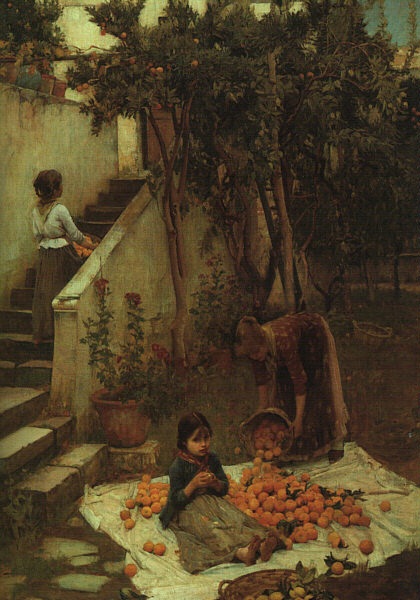Great wit and humor aside, Ronald Knox struggled with doubts himself and never stopped seeking ways to present the faith that would help others, too, in plain and simple ways. Here he finds evidence of Jesus' divinity in the ordinariness of Our Lord's life:
He came, and the world missed the portents of his coming. The stars could not keep the secret, they blurted it out to the wise men, their cronies; the angels could not keep the secret, they sang it to the shepherds over the fields of Bethlehem. But the world, the world of fashion and intelligence, was looking the other way. What, after all, was there for it to see? A baby, crying at its mother's breast; a boy working in a carpenter's shop; a street-corner orator, producing a nine-days wonder among the fisher-folk at Capharnaum; a discredited popular leader, ignominiously put to death; a corpse lying in a tomb -- and this was God! He rose again, but in doing so he showed himself to none but a handful of chosen witnesses; the world looked to find, him, and he was gone.
Would you know that Jesus Christ is divine? Then see how he imitates, in his humanity, the reticence of the God who created the world and left it to forget him, the God who rules the world, yet rules it imperceptibly; and recognize, in the masterpiece of the Incarnation, the touch of the same artist's brush. [Pastoral Sermons, 326-327]
You pass through the streets as you go to your daily work, and see all those thousands of your fellow beings -- faces hardened by money-getting, faces impudent with the affectation of vice, faces vacant with frivolity, faces lined with despair -- and it seems to you impossible that each one of those faces, with so little recognition in it of a divine vocation or an eternal destiny, can yet represent a soul for which God cares. And yet he does care, if theology is to mean anything; cares for this one as he cares for Zaccheus, cares for that one as he cared for Mary Magdalen, cares for that one as he cared for the penitent thief.
All these millions of souls, and he cares for each, thirsts for each. And then suddenly you think of your own soul, only one among all those millions, and among all those millions so little distinguishable by really vivid faith, by really generous love, by real intimacy with the things of eternity; can it really be, you ask yourself, that he cares for me? [PS, 303]





















